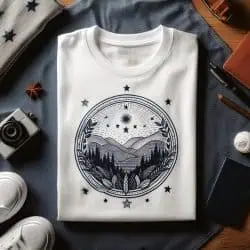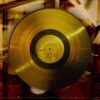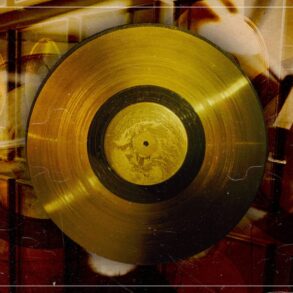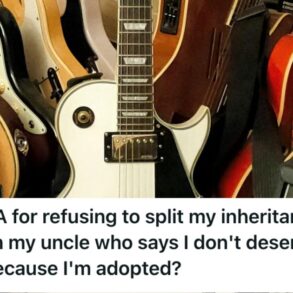
Looking for a new way to boost income and connect with fans? Learn the seven steps to make music merch that will leave a lasting impression.and then sell it.


How To Make Music Merch and Sell It: 7 Step Guide
by Chris Huff via Disc Makers Blog
Creating and selling merchandise is one of the best ways for indie artists to supplement their performing income. But maybe you are new to this and don’t know how to make merch. How should you get started? There are standard items that all artists make, like T-shirts and posters, and then there are other infinite possibilities. For those learning how to make your own merch for the first time and those needing a refresher on the process, here are seven easy steps to get you started.
Why merch is essential for indie artists
As you’re brainstorming merch ideas, you may wonder why you should invest in shirts, posters, and other branded products. Here’s three reasons why every indie artist should be interested in designing and selling merch.
Merch boosts income
Custom merch is almost always a tangible income stream adjacent to your music. If you make 50 T-Shirts at $11.50 each and sell them for $20, you’ll make your money back after selling 29 shirts. The rest is profit! Profit margins can be high on merch items, which is how musicians make money to fund their projects. Often merch sales can double the money you make at any given gig.
Merch builds fan connections
All artists know the joys of seeing a band they love and coming home with a souvenir. The same is true for your fans. If you create memorable moments in your show, they will clamor for a piece of merch to have as a keepsake. Fans wearing your merch are providing you with free advertising. People will ask them about you! So when considering how to make merch, it’s good practice to have your band logo and/or web address visible on the item so people know how to find you. This will also help you build your artist brand.
Merch can be part of a launch strategy
If you’re planning an album release or announcing a tour, have merch ready to go. Limited-edition merchandise is exciting for an already attentive fanbase and can attract potential fans, too, as people love exclusive things. Coordinate your unique merch items with your album/tour art so that people will recognize your brand.
How to make your own merch in 7 steps
Do you need to be well-versed in graphic design to create custom merch? When considering the merchandise design, can you use the same PNG files as your album cover art or band photoshoot? These are all valid questions to have – and we’ve got the answers.
1. Define your merch goals and audience
Are you promoting a specific event or just trying to have something to sell at gigs in general? Be aware of who you are making the merch for and what they might like. Artists often poll their social media followers to determine the kinds of merch items and branded products they might want. If your followers are mostly your real-life friends, then you probably have a clearer sense of what kind of merch might appeal to them.
2. Brainstorm merch ideas
When figuring out how to make merch, think outside the box. T-shirts, hoodies, and caps are cool — but have you considered beanies, tote bags, bracelets, guitar picks, and drink koozies? Again, what you create depends on your music and your audience. Rap duo Run The Jewels made “Meow The Jewels” cat food dishes. Jethro Tull made official teapots. A band called the Treemen attached tree seeds to their EP. However, note that what works for one band won’t necessarily work for another. A jam band will have different merch than a Christian band, for example. Think of merch as an extension of your artistic identity.
Manufactured items are great, but items that you produce yourself can often be seen as more valuable by your crowd. Jeffrey Lewis creates comic books in addition to writing songs, and Hamell on Trial makes paintings of famous musicians and other celebs. Robyn Hitchcock sold plastic traffic cones that he’d drawn on at his shows in the ‘90s and ‘00s. Artists commonly sell their own books these days as well. Do you have an artistic skill that translates into something sellable? As you consider how to make your own merch, keep in mind that esoteric items particular to you can be extremely memorable and valuable to your audience.
3. Design your merch
Some artists will be able to design their own merch and others will need to hire professionals. Key elements to consider for merch design and mockups:
Logo and album art: Your logo, album art, and/or iconic lyrics printed on any merch will always appeal to your audience.
Color scheme: Coordinate the color palette of your merch, your album artwork, and your branding on social media. People will remember you better if you do this!
Typography: Choose your fonts wisely. Avoid common fonts and overused fonts like Papyrus and Comic Sans. While you don’t have to pay a graphic artist to create your own personal font, it’s good to pick something off the beaten path. Choose a font that complements your music and fits the vibe you want to impart.
4. Choose a merch production method
Print-on-demand merchandise: A great option for those with limited up-front funds, print-on-demand merch is printed one piece or a few pieces at a time. You don’t have to haul around inventory because orders are fulfilled as they come in. Profit margins are lower and you have less control over the customization in most cases, but it’s a viable option for those lacking disposable funds. Some popular platforms are Printful, Teespring, and Redbubble.
Bulk manufacturing: One of the truisms in how to make merch is that ordering merch items in bulk will always save you money in the cost per item. This then gives you a higher profit margin. Bulk manufacturing also often has more options for custom design and packaging. While it requires an upfront investment and inventory storage, bulk ordering will ultimately save you money if you can afford the upfront payment. Popular merch bulk manufacturers include Merchly, Custom Ink, and Vistaprint.
DIY Merch: For artists with a strong DIY approach or those who just want to offer something special and custom-made, you can print your own merch using local printers or make handmade items like patches, screen-printed/tie-dyed shirts, or something more personalized. Kimya Dawson brings Sharpies and white T-shirts to her concerts and hand-draws custom T-shirts after the show for people; not only does this fit in with her aesthetic, but it gives fans something extremely personal to take home. Definitely a master class in how to make your own merch!
5. Set your pricing
To figure out what you should charge for each merch product, calculate how much it costs to produce per unit. Include all extraneous costs like shipping and packaging. Then decide on a price that allows for a profit (how much profit is entirely up to you). A rule of thumb companies often use is to take your cost per item and double it — so if it costs you $5 to produce a small poster, sell them for $10.
But, especially in these times, keep your prices affordable for your fanbase. Robert Smith of The Cure has recently earned tremendous goodwill from keeping ticket prices and merch low for his last tour; his subsequent album release became a worldwide “event” not in small part because of this. Premium items like limited-edition vinyl records can command a higher price than stickers or T-shirts, obviously. You can also save your fans money by offering bundle discounts, i.e. CDs are $15 apiece, but if you buy all three it’s $35.
6. Set up an online merch store
Whether you use Shopify, Bandcamp, Big Cartel, or sell directly through a Facebook or Instagram shop, you’ll need a central online location where followers can purchase your merch. Your merch store should be easy to access from your official artist website. Include clear images, descriptions, and pricing for each product.
7. Promote your merch
Make sure your audience is aware that the merch exists! While live shows are the best place to promote your merch, you may have success selling your wares during virtual concerts and livestreams as well. You can also attract a merch sale through normal promotional activities like weekly emails and social media posting. Never “sell at them”; it turns people off and is hatefully annoying! But keep your fans aware of what unique merch exists. With a little grace and humor, using your social media platforms in creative ways to announce the existence of your merch should garner sales. Tactics of scarcity can help drive sales as well, especially online; people love an “act now while supplies last!” offer or something limited-edition.
Turning merch into a long-term revenue stream
It’s true that a well-designed piece of merch can bring significantly more attention to a band. You thought you were in the music business, but it turns out you’re really in the T-shirt business!
The punk band Misfits has gained a new generation of followers from their iconic logo T-shirts. KISS fans religiously collect all of their various merch items, including the pinball machine! Bands who appeal to younger fans like Taylor Swift and The Spice Girls have made millions in merch sales alone. Think of merch not only as a promotional material, but as an extension of your art. It will become an important method of connecting with your fans. Probably the most-valuable lesson of learning how to make merch is that merch is a never-ending process and not a one-time venture. The merch you create will be a lasting part of your brand identity.
Chris Huff has been a professional singer, multi-instrumentalist, songwriter, and producer for over 25 years. He has worked as a sideman with Peter Yarrow (Peter, Paul, and Mary), Echo and the Bunnymen, Chuck Hammer (David Bowie, Lou Reed), and Tom Kitt (Broadway composer of Next To Normal). Chris also wrote liner notes for David Bowie’s Live And WellCD.
This post was originally published on this site be sure to check out more of their content







